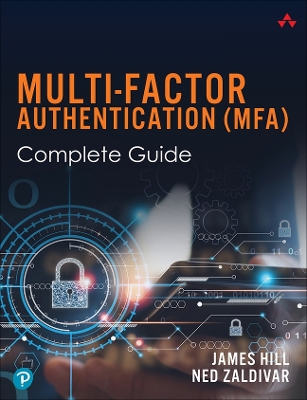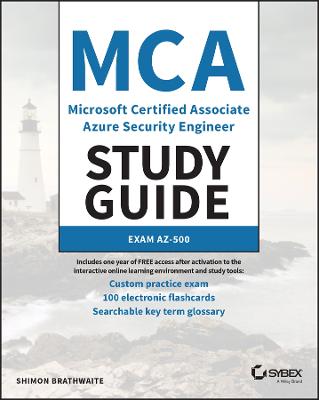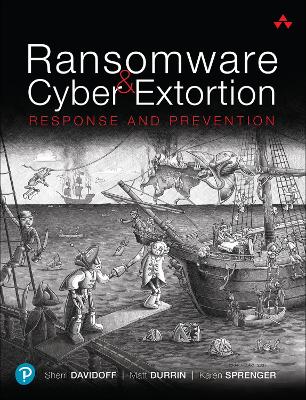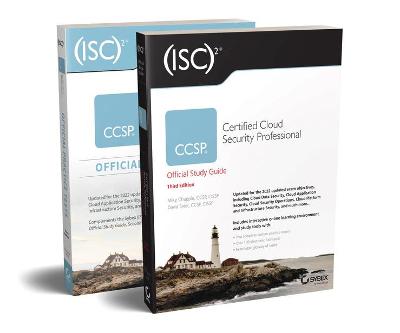Securing Enterprise Networks with Cisco Meraki
 portes grátis
portes grátis
Securing Enterprise Networks with Cisco Meraki
Chaney, Ryan; Singh, Simerjit
Pearson Education (US)
12/2024
800
Mole
9780138298180
Pré-lançamento - envio 15 a 20 dias após a sua edição
Chapter 1 Meraki's History 1
Roofnet 1
Start-up 3
Acquisition by Cisco 4
The Meraki Museum 7
Summary 7
Notes 8
Further Reading 8
Chapter 2 Security Frameworks and Industry Best Practices 11
The Cybersecurity Imperative 11
Adopting Industry Best Practice 13
Industry Standards 13
Security as a Team Sport 15
Key Themes Across Security Standards 15
Continuous Improvement 16
Comparison of Common Security Standards and Framework Requirements 16
Summary 17
Further Reading 17
Chapter 3 Meraki Dashboard and Trust 19
Meraki Dashboard 19
Out-of-Band Management 20
Meraki Dashboard Hierarchy 20
Trust 22
Privacy 23
Data Retention Policy 24
Data Security 24
Data Center Resiliency 26
Compliance with Information Standards, Regulations, and Industry Best Practices 26
Hardware Trust Model 28
Supply Chain Security 28
Secure Boot 29
Secure Device Onboarding 29
Software Trust Model 30
Cloud Shared Responsibility Model 32
Summary 32
Notes 33
Further Reading 33
Chapter 4 Role-Based Access Control (RBAC) 37
Meraki Dashboard's Administration Hierarchy 38
Administrator Access Levels for Dashboard Organizations and Networks 38
Assigning Permissions Using Network Tags 40
Port-Level Permissions 42
Role-Based Access Control for Camera-Only Administrators 49
Role-Based Access Control for Sensor-Only Administrators 52
Role-Based Access Control Using Systems Manager Limited Access Roles 53
Summary 60
Further Reading 60
Chapter 5 Securing Administrator Access to Meraki Dashboard 61
Securing Administrative Access to Meraki Dashboard 61
Meraki Dashboard Local Administrator Access Controls 62
Creating Meraki Dashboard Local Administrator Accounts 62
Password Age 68
Password Reuse 70
Password Complexity 72
Account Lockout After Invalid Login Attempts 74
Idle Timeout 77
IP Whitelisting 79
Multifactor Authentication (MFA) 81
Configuring SAML Single Sign-On (SSO) for Dashboard 98
The Use Cases for Single Sign-On 98
SAML Single Sign-On Login Flow 99
SAML Single Sign-On Design 99
Configuring Meraki SAML SSO Using Cisco Duo and Microsoft Entra ID 102
Prerequisites 103
Adding SP-Initiated SAML SSO 146
Verifying SAML SSO Access to Meraki Dashboard with Cisco Duo and Microsoft Entra (Including Duo Inline Enrollment) 148
Implementing Additional Access Controls Using Cisco Duo and Microsoft Entra ID 159
Password Policies 159
Password Age 160
Password Reuse 160
Password Complexity 160
Account Lockout After Invalid Login Attempts 160
Security Policies 161
IP Whitelisting 161
Restricting Concurrent Logins 162
Automatically Disabling Inactive Accounts 162
Automatically Disabling Accounts After a Predetermined Period of Time Unless Revalidated 163
Automatically Disabling Temporary Accounts 165
Summary 165
Further Reading 166
Chapter 6 Security Operations 169
Centralized Logging Capabilities 170
Login Attempts 172
Change Log 172
Event Log 174
Creating API Keys 175
Finding Your Organization ID 180
Exporting Logs 180
Exporting Logs to Splunk 181
Syslog 190
Exporting Flow Data 192
NetFlow, IPFIX, and Encrypted Traffic Analytics 193
Syslog Flows 196
Compliance Reporting with AlgoSec 197
Prerequisites 197
Integrating AlgoSec with Meraki Dashboard for Compliance Reporting 197
Monitoring and Incident Response 208
Security Center 209
Alerts 210
External Alerting 213
Webhooks 213
SNMP Traps 224
External Polling 227
Meraki Dashboard API 228
SNMP 234
Automated Incident Response with ServiceNow 240
Security Management 246
Inventory 247
Hardware 247
Software 248
Configuration 249
Client Devices 251
Topology 252
Summary 253
Notes 253
Further Reading 254
Chapter 7 User Authentication 257
Configuring Meraki Cloud Authentication 260
Configuring SAML with Cisco Duo and Microsoft Entra 264
Confirming Functionality of SAML Configuration Using AnyConnect VPN 273
Configuring RADIUS Using Cisco ISE, Cisco Duo, and Microsoft Active Directory 276
Prerequisites 277
Configuring Users and Groups in Microsoft Active Directory 280
Configuring Group(s) in Active Directory 280
Configuring User(s) in Active Directory 281
Configuring Cisco Identity Services Engine (ISE) 285
Adding Network Access Devices (NADs) to Cisco ISE 285
RADIUS Configuration for Wired and Wireless 802.1X 295
Configuring Organization-Wide RADIUS in Meraki Dashboard 295
Creating a Policy Set for Wired and Wireless 802.1X in Cisco ISE 300
Configuring an Authentication Policy in Cisco ISE 304
Configuring an Authorization Policy in Cisco ISE 305
Confirming Functionality of RADIUS Authentication on Wireless 308
Confirming Functionality of RADIUS Authentication for Wired 802.1X 312
RADIUS Configuration for AnyConnect VPN with Duo MFA 315
Configuring Duo Authentication Proxy 317
Configuring AD Sync in Duo Admin Panel 319
Encrypting Passwords in Duo Authentication Proxy 330
Enrolling Users with Cisco Duo 330
Configuring Cisco Duo as an External RADIUS Server in Cisco ISE 335
Creating the Policy Set for AnyConnect VPN in Cisco ISE 337
Meraki Dashboard Using Active Directory Authentication for AnyConnect VPN 342
Prerequisites 342
Configuring Active Directory Authentication 346
Confirming Functionality of Active Directory Configuration 348
Summary 350
Further Reading 350
Chapter 8 Wired and Wireless LAN Security 353
Access Control Lists and Firewalls 354
Access Control Lists (Meraki MS) 354
Meraki MR Firewall 357
Layer 3 Firewall 358
Layer 7 Firewall (Including NBAR Content Filtering) 360
Ethernet Port Security Features (Meraki MS) 362
MAC Allow Lists 362
Sticky MAC Allow Lists 366
Port Isolation 368
SecurePort 370
Dynamic ARP Inspection 373
Rogue DHCP Server Detection (Meraki MS) 376
Hardening Meraki MR and MS Devices (Local Status Page) 379
Zero Trust (Wired and Wireless Dot1x) 382
802.1X with Protected EAP (PEAP) on Wired and Wireless Networks 383
Configuring Wireless 802.1X with Protected EAP (PEAP) 383
Configuring Wired 802.1X with Protected EAP (PEAP) 388
Configuring 802.1X Using EAP-TLS on Wired and Wireless Networks 394
Configuring the Identity Source Sequence in Cisco ISE 396
Configuring the Policy Set in Cisco ISE 398
Generating a Client Certificate Using Cisco ISE 404
Exporting the Cisco ISE Certificate Authority Certificate 408
Testing Wireless 802.1X with EAP-TLS 411
Testing Wired 802.1X with EAP-TLS 413
Sentry-Based 802.1X with EAP-TLS on Wired and Wireless Networks 416
Sentry Wi-Fi 416
Sentry LAN 419
Configuring MAC Authentication Bypass (MAB) 426
Configuring an Endpoint Identity Group in Cisco ISE 426
Creating a Policy Set in Cisco ISE for MAC Authentication Bypass 430
Configuring Wireless MAC Authentication Bypass in Meraki Dashboard 436
Configuring Wired MAC Authentication Bypass in Meraki Dashboard 439
Group Policies 443
Creating a Group Policy 443
Applying Group Policies 446
Applying Group Policies to a Client Manually 446
Applying Group Policies Using a Sentry Policy 449
Applying Group Policies Using RADIUS Attributes and Cisco ISE 452
Adaptive Policy and Security Group Tags (SGTs) 459
Enabling Adaptive Policy 460
Configuring Security Group Tag Propagation 461
Enabling SGT Propagation on Meraki MS Switches 461
Enabling SGT Propagation on Meraki MX Security Appliances 463
Creating Security Group Tags 466
Creating Adaptive Policy Groups in Meraki Dashboard 466
Creating Security Group Tags in Cisco ISE 469
Assigning Security Group Tags 472
Statically Assigning Security Group Tags to SSIDs 472
Statically Assigning Security Group Tags to Switch Ports 473
Assigning Security Group Tags Using Cisco ISE 475
Creating an Adaptive Policy 476
Testing Adaptive Policy 479
Client Laptop 480
POS Terminal 480
POS Server 483
Testing 483
Wireless Security 487
Summary 489
Notes 489
Further Reading 490
Chapter 9 Meraki MX and WAN Security 493
Meraki MX Introduction 493
Site-to-Site VPN (Auto VPN) 494
Site-to-Site VPN with Non-Meraki Devices 499
ThousandEyes 505
Remote-Access VPN 507
Client VPN 508
Sentry VPN 514
AnyConnect VPN 519
Confirming Functionality of AnyConnect VPN Access 524
Restricting Client VPN Traffic 529
Virtual MX (vMX) 531
Sizing a Virtual MX 531
Understanding Feature Parity with Meraki MX 532
Deploying Virtual MX in Amazon Web Services (AWS) 533
Creating a New vMX Network in Meraki Dashboard 533
Configuring the Default VPC in AWS 536
Deploying vMX in AWS 541
Viewing the New vMX in Meraki Dashboard 552
Summary 553
Notes 554
Further Reading 554
Chapter 10 Securing User Traffic 557
Comparison of Meraki's Native Security Capabilities and Cisco Secure Connect 558
Native Meraki MX Capabilities 559
Layer 3 Firewall 559
Layer 7 Firewall 563
Geo-IP Firewall 566
Enabling Detailed Traffic Analysis 566
Configuring Geo-IP Firewall 567
Content Filtering 570
URL Filtering 570
Category Blocking with Cisco Talos Intelligence 572
Threat Protection 576
Advanced Malware Protection (AMP) 576
Intrusion Detection and Prevention (IDS/IPS) 580
Cisco Secure Connect 582
Setting Up Secure Connect 584
Initial Setup and Integration with Cisco Umbrella 586
Adding Meraki SD-WAN Sites to Secure Connect 597
Configuring DHCP to Assign Umbrella's DNS Servers 601
Installing Umbrella's Root CA Certificate on Clients 602
Enabling Intelligent Proxy and SSL Decryption in Cisco Umbrella 603
DNS Security 606
Cloud Firewall 608
Layer 3/4 Firewall 608
Application Blocking 614
Intrusion Detection and Prevention (IDS/IPS) 620
Secure Web Gateway (SWG) 622
URL Filtering (Destination Lists) 622
Content Filtering (Content Categories) 631
File Inspection and Advanced Sandboxing 636
File Type Control 645
Cloud Access Security Broker (CASB) 649
Data Loss Prevention (DLP) 657
Summary 667
Notes 667
Further Reading 667
Chapter 11 Securing End-User Devices 671
Integrating with Vender Mobile Device Enrollment Programs 672
Enrolling Devices with Systems Manager 676
Checking Compliance with Security Policy (Systems Manager Policies) 677
Creating a Systems Manager Profile 681
Configuring End-User Devices for Network Connectivity 684
Certificate Settings Payload 684
Wi-Fi Settings Payload 686
VPN Settings Payload 693
Applying Security Policy to Devices (Systems Manager Profiles) 697
Passcode Policy (Includes Screen Lock) 697
Disk Encryption 700
Preventing the Installation of Banned Apps 700
Deploying Applications to Devices 704
Pushing Operating System Updates to Devices 711
Summary 712
Notes 713
Further Reading 713
Chapter 12 Physical Security 715
Meraki MV Security Cameras 716
Privacy 716
Monitoring Video 717
Motion Alerts 719
Motion Search 721
Sensor Sight (Meraki Smart Camera and Sensor Integration) 724
Summary 727
Further Reading 727
Appendix A Comparison of Common Security Standards and Framework Requirements 729
9780138298180 TOC 9/12/2024
Chapter 1 Meraki's History 1
Roofnet 1
Start-up 3
Acquisition by Cisco 4
The Meraki Museum 7
Summary 7
Notes 8
Further Reading 8
Chapter 2 Security Frameworks and Industry Best Practices 11
The Cybersecurity Imperative 11
Adopting Industry Best Practice 13
Industry Standards 13
Security as a Team Sport 15
Key Themes Across Security Standards 15
Continuous Improvement 16
Comparison of Common Security Standards and Framework Requirements 16
Summary 17
Further Reading 17
Chapter 3 Meraki Dashboard and Trust 19
Meraki Dashboard 19
Out-of-Band Management 20
Meraki Dashboard Hierarchy 20
Trust 22
Privacy 23
Data Retention Policy 24
Data Security 24
Data Center Resiliency 26
Compliance with Information Standards, Regulations, and Industry Best Practices 26
Hardware Trust Model 28
Supply Chain Security 28
Secure Boot 29
Secure Device Onboarding 29
Software Trust Model 30
Cloud Shared Responsibility Model 32
Summary 32
Notes 33
Further Reading 33
Chapter 4 Role-Based Access Control (RBAC) 37
Meraki Dashboard's Administration Hierarchy 38
Administrator Access Levels for Dashboard Organizations and Networks 38
Assigning Permissions Using Network Tags 40
Port-Level Permissions 42
Role-Based Access Control for Camera-Only Administrators 49
Role-Based Access Control for Sensor-Only Administrators 52
Role-Based Access Control Using Systems Manager Limited Access Roles 53
Summary 60
Further Reading 60
Chapter 5 Securing Administrator Access to Meraki Dashboard 61
Securing Administrative Access to Meraki Dashboard 61
Meraki Dashboard Local Administrator Access Controls 62
Creating Meraki Dashboard Local Administrator Accounts 62
Password Age 68
Password Reuse 70
Password Complexity 72
Account Lockout After Invalid Login Attempts 74
Idle Timeout 77
IP Whitelisting 79
Multifactor Authentication (MFA) 81
Configuring SAML Single Sign-On (SSO) for Dashboard 98
The Use Cases for Single Sign-On 98
SAML Single Sign-On Login Flow 99
SAML Single Sign-On Design 99
Configuring Meraki SAML SSO Using Cisco Duo and Microsoft Entra ID 102
Prerequisites 103
Adding SP-Initiated SAML SSO 146
Verifying SAML SSO Access to Meraki Dashboard with Cisco Duo and Microsoft Entra (Including Duo Inline Enrollment) 148
Implementing Additional Access Controls Using Cisco Duo and Microsoft Entra ID 159
Password Policies 159
Password Age 160
Password Reuse 160
Password Complexity 160
Account Lockout After Invalid Login Attempts 160
Security Policies 161
IP Whitelisting 161
Restricting Concurrent Logins 162
Automatically Disabling Inactive Accounts 162
Automatically Disabling Accounts After a Predetermined Period of Time Unless Revalidated 163
Automatically Disabling Temporary Accounts 165
Summary 165
Further Reading 166
Chapter 6 Security Operations 169
Centralized Logging Capabilities 170
Login Attempts 172
Change Log 172
Event Log 174
Creating API Keys 175
Finding Your Organization ID 180
Exporting Logs 180
Exporting Logs to Splunk 181
Syslog 190
Exporting Flow Data 192
NetFlow, IPFIX, and Encrypted Traffic Analytics 193
Syslog Flows 196
Compliance Reporting with AlgoSec 197
Prerequisites 197
Integrating AlgoSec with Meraki Dashboard for Compliance Reporting 197
Monitoring and Incident Response 208
Security Center 209
Alerts 210
External Alerting 213
Webhooks 213
SNMP Traps 224
External Polling 227
Meraki Dashboard API 228
SNMP 234
Automated Incident Response with ServiceNow 240
Security Management 246
Inventory 247
Hardware 247
Software 248
Configuration 249
Client Devices 251
Topology 252
Summary 253
Notes 253
Further Reading 254
Chapter 7 User Authentication 257
Configuring Meraki Cloud Authentication 260
Configuring SAML with Cisco Duo and Microsoft Entra 264
Confirming Functionality of SAML Configuration Using AnyConnect VPN 273
Configuring RADIUS Using Cisco ISE, Cisco Duo, and Microsoft Active Directory 276
Prerequisites 277
Configuring Users and Groups in Microsoft Active Directory 280
Configuring Group(s) in Active Directory 280
Configuring User(s) in Active Directory 281
Configuring Cisco Identity Services Engine (ISE) 285
Adding Network Access Devices (NADs) to Cisco ISE 285
RADIUS Configuration for Wired and Wireless 802.1X 295
Configuring Organization-Wide RADIUS in Meraki Dashboard 295
Creating a Policy Set for Wired and Wireless 802.1X in Cisco ISE 300
Configuring an Authentication Policy in Cisco ISE 304
Configuring an Authorization Policy in Cisco ISE 305
Confirming Functionality of RADIUS Authentication on Wireless 308
Confirming Functionality of RADIUS Authentication for Wired 802.1X 312
RADIUS Configuration for AnyConnect VPN with Duo MFA 315
Configuring Duo Authentication Proxy 317
Configuring AD Sync in Duo Admin Panel 319
Encrypting Passwords in Duo Authentication Proxy 330
Enrolling Users with Cisco Duo 330
Configuring Cisco Duo as an External RADIUS Server in Cisco ISE 335
Creating the Policy Set for AnyConnect VPN in Cisco ISE 337
Meraki Dashboard Using Active Directory Authentication for AnyConnect VPN 342
Prerequisites 342
Configuring Active Directory Authentication 346
Confirming Functionality of Active Directory Configuration 348
Summary 350
Further Reading 350
Chapter 8 Wired and Wireless LAN Security 353
Access Control Lists and Firewalls 354
Access Control Lists (Meraki MS) 354
Meraki MR Firewall 357
Layer 3 Firewall 358
Layer 7 Firewall (Including NBAR Content Filtering) 360
Ethernet Port Security Features (Meraki MS) 362
MAC Allow Lists 362
Sticky MAC Allow Lists 366
Port Isolation 368
SecurePort 370
Dynamic ARP Inspection 373
Rogue DHCP Server Detection (Meraki MS) 376
Hardening Meraki MR and MS Devices (Local Status Page) 379
Zero Trust (Wired and Wireless Dot1x) 382
802.1X with Protected EAP (PEAP) on Wired and Wireless Networks 383
Configuring Wireless 802.1X with Protected EAP (PEAP) 383
Configuring Wired 802.1X with Protected EAP (PEAP) 388
Configuring 802.1X Using EAP-TLS on Wired and Wireless Networks 394
Configuring the Identity Source Sequence in Cisco ISE 396
Configuring the Policy Set in Cisco ISE 398
Generating a Client Certificate Using Cisco ISE 404
Exporting the Cisco ISE Certificate Authority Certificate 408
Testing Wireless 802.1X with EAP-TLS 411
Testing Wired 802.1X with EAP-TLS 413
Sentry-Based 802.1X with EAP-TLS on Wired and Wireless Networks 416
Sentry Wi-Fi 416
Sentry LAN 419
Configuring MAC Authentication Bypass (MAB) 426
Configuring an Endpoint Identity Group in Cisco ISE 426
Creating a Policy Set in Cisco ISE for MAC Authentication Bypass 430
Configuring Wireless MAC Authentication Bypass in Meraki Dashboard 436
Configuring Wired MAC Authentication Bypass in Meraki Dashboard 439
Group Policies 443
Creating a Group Policy 443
Applying Group Policies 446
Applying Group Policies to a Client Manually 446
Applying Group Policies Using a Sentry Policy 449
Applying Group Policies Using RADIUS Attributes and Cisco ISE 452
Adaptive Policy and Security Group Tags (SGTs) 459
Enabling Adaptive Policy 460
Configuring Security Group Tag Propagation 461
Enabling SGT Propagation on Meraki MS Switches 461
Enabling SGT Propagation on Meraki MX Security Appliances 463
Creating Security Group Tags 466
Creating Adaptive Policy Groups in Meraki Dashboard 466
Creating Security Group Tags in Cisco ISE 469
Assigning Security Group Tags 472
Statically Assigning Security Group Tags to SSIDs 472
Statically Assigning Security Group Tags to Switch Ports 473
Assigning Security Group Tags Using Cisco ISE 475
Creating an Adaptive Policy 476
Testing Adaptive Policy 479
Client Laptop 480
POS Terminal 480
POS Server 483
Testing 483
Wireless Security 487
Summary 489
Notes 489
Further Reading 490
Chapter 9 Meraki MX and WAN Security 493
Meraki MX Introduction 493
Site-to-Site VPN (Auto VPN) 494
Site-to-Site VPN with Non-Meraki Devices 499
ThousandEyes 505
Remote-Access VPN 507
Client VPN 508
Sentry VPN 514
AnyConnect VPN 519
Confirming Functionality of AnyConnect VPN Access 524
Restricting Client VPN Traffic 529
Virtual MX (vMX) 531
Sizing a Virtual MX 531
Understanding Feature Parity with Meraki MX 532
Deploying Virtual MX in Amazon Web Services (AWS) 533
Creating a New vMX Network in Meraki Dashboard 533
Configuring the Default VPC in AWS 536
Deploying vMX in AWS 541
Viewing the New vMX in Meraki Dashboard 552
Summary 553
Notes 554
Further Reading 554
Chapter 10 Securing User Traffic 557
Comparison of Meraki's Native Security Capabilities and Cisco Secure Connect 558
Native Meraki MX Capabilities 559
Layer 3 Firewall 559
Layer 7 Firewall 563
Geo-IP Firewall 566
Enabling Detailed Traffic Analysis 566
Configuring Geo-IP Firewall 567
Content Filtering 570
URL Filtering 570
Category Blocking with Cisco Talos Intelligence 572
Threat Protection 576
Advanced Malware Protection (AMP) 576
Intrusion Detection and Prevention (IDS/IPS) 580
Cisco Secure Connect 582
Setting Up Secure Connect 584
Initial Setup and Integration with Cisco Umbrella 586
Adding Meraki SD-WAN Sites to Secure Connect 597
Configuring DHCP to Assign Umbrella's DNS Servers 601
Installing Umbrella's Root CA Certificate on Clients 602
Enabling Intelligent Proxy and SSL Decryption in Cisco Umbrella 603
DNS Security 606
Cloud Firewall 608
Layer 3/4 Firewall 608
Application Blocking 614
Intrusion Detection and Prevention (IDS/IPS) 620
Secure Web Gateway (SWG) 622
URL Filtering (Destination Lists) 622
Content Filtering (Content Categories) 631
File Inspection and Advanced Sandboxing 636
File Type Control 645
Cloud Access Security Broker (CASB) 649
Data Loss Prevention (DLP) 657
Summary 667
Notes 667
Further Reading 667
Chapter 11 Securing End-User Devices 671
Integrating with Vender Mobile Device Enrollment Programs 672
Enrolling Devices with Systems Manager 676
Checking Compliance with Security Policy (Systems Manager Policies) 677
Creating a Systems Manager Profile 681
Configuring End-User Devices for Network Connectivity 684
Certificate Settings Payload 684
Wi-Fi Settings Payload 686
VPN Settings Payload 693
Applying Security Policy to Devices (Systems Manager Profiles) 697
Passcode Policy (Includes Screen Lock) 697
Disk Encryption 700
Preventing the Installation of Banned Apps 700
Deploying Applications to Devices 704
Pushing Operating System Updates to Devices 711
Summary 712
Notes 713
Further Reading 713
Chapter 12 Physical Security 715
Meraki MV Security Cameras 716
Privacy 716
Monitoring Video 717
Motion Alerts 719
Motion Search 721
Sensor Sight (Meraki Smart Camera and Sensor Integration) 724
Summary 727
Further Reading 727
Appendix A Comparison of Common Security Standards and Framework Requirements 729
9780138298180 TOC 9/12/2024







